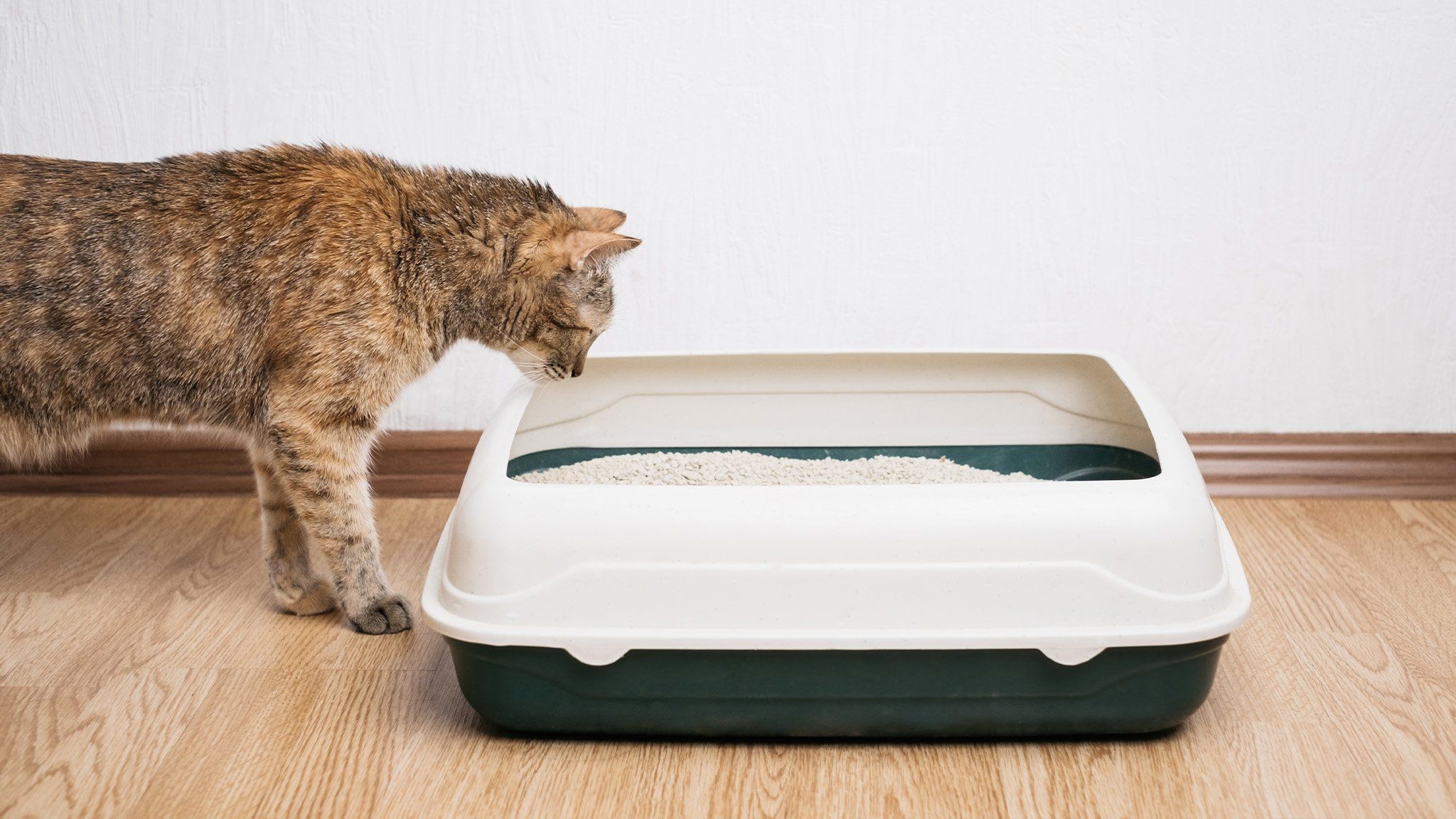
Cats are wonderful companions, bringing joy and comfort to our lives. Yet, ensuring their happiness requires attention to their needs. One crucial aspect is the litter box setup.
A well-maintained litter box is essential for your cat’s health and comfort. It also keeps your home clean and odor-free. But how do you achieve this balance?
Whether you’re a busy executive or a new pet owner, managing a litter box can seem daunting. You might wonder about the best practices for litter box maintenance. Or perhaps you’re unsure about the right litter box setup.
Fear not, as we’re here to guide you through it. With the right cat care tips, you can create a litter box environment that suits both you and your feline friend.
From choosing the right litter to understanding your cat’s preferences, we’ve got you covered. Our litter box tips for cats will help you provide the best care possible.
Let’s explore how to make your cat’s life easier with these practical cat litter solutions. Your cat deserves the best, and so do you.
1. Choose the Right Litter Box and Litter
Choosing the perfect litter box is vital for your cat’s comfort and well-being. The right choice depends on various factors, including your cat’s size and age. A larger cat needs more space to move, while kittens require a box with low sides for easy access.
Consider whether an open or covered litter box suits your cat’s personality better. While covered boxes offer privacy, some cats feel trapped inside. Observing your cat’s behavior can help make an informed decision.
Litter choice is equally important for maintaining hygiene and ensuring ease of cleaning. Many cat owners prefer clumping litter due to its simple cleanup process. It also tends to control odors effectively, which is crucial for maintaining a pleasant living space.
Cats often have strong preferences for certain litter textures and scents. Unscented litter can be a safer option as some cats are sensitive to fragrances. Providing a litter that your cat likes will promote consistent litter box usage.
Here’s what to consider for an ideal litter box setup:
- Size: Ensure the box is 1.5 times the cat’s length.
- Depth: Opt for 2-3 inches of litter for easy coverage.
- Type: Choose between clumping and non-clumping options.
Always introduce new litter gradually, mixing a small amount with the old type to avoid stress. Changing litter abruptly can confuse your cat, leading to avoidance.
Experiment and adapt until you find the perfect combination that satisfies your cat’s preferences and your cleaning needs. A happy cat means a happier home environment.
2. Find the Perfect Litter Box Location
Finding the ideal spot for your cat’s litter box is a balance between convenience and comfort. The placement can significantly affect your cat’s willingness to use it. Cats generally prefer quiet, private locations away from high traffic and noise.
Avoid placing the litter box near their food and water dishes. Cats are clean creatures and may refuse to use the bathroom if it’s too close to their eating area. This separation is key to maintaining good hygiene and encouraging regular usage.
If your home has multiple levels, consider a litter box on each floor. This minimizes the distance your cat needs to travel, providing easy access. Elderly cats, in particular, benefit from less mobility strain when using their litter facilities.
Avoid placing the box in confined spaces where it may be difficult for your cat to escape. A safe and secure space that allows for a quick retreat can make all the difference. Cats like the ability to see their surroundings and feel in control of their environment.
Consider these placement tips to ensure a successful litter box setup:
- Quiet Areas: Away from appliances and foot traffic.
- Accessibility: Avoid stairs for senior cats.
- Ventilation: Ensure the area has good air flow for odor control.
Regularly observe your cat to ensure they’re comfortable with the location. Be open to relocating the box if your cat seems hesitant or disinterested. A well-chosen spot will foster frequent and consistent use, contributing to a stress-free environment for both you and your feline companion.
3. Keep It Clean: Litter Box Maintenance Made Simple
Routine litter box maintenance is critical for your cat’s health and happiness. A clean litter box encourages consistent use and minimizes unwanted odors. It also prevents the buildup of harmful bacteria.
Begin by scooping the litter box daily. Removing waste regularly keeps the box fresh and inviting. For busy schedules, setting a specific time each day can make this task a seamless part of your routine.
Deep cleaning the litter box weekly is equally important. This involves emptying all contents, scrubbing the box with mild soap, and rinsing it thoroughly. Avoid harsh chemicals, as cats are sensitive to strong odors.
Choose a quality cat litter that suits both your preferences and your cat’s needs. Clumping litters make scooping easier, while unscented varieties often appeal to sensitive feline noses. Experiment to find the option that works best for both you and your cat.
Incorporate litter box accessories to simplify maintenance. Liners can make cleaning quicker, while mats reduce the spread of litter throughout your home. These additions can save time and effort in the long run.
Implement the following simple habits to ensure a clean and hygienic environment for your cat:
- Daily Scooping: Keep waste to a minimum.
- Weekly Deep Clean: Prevent odor and bacteria buildup.
- Liner and Mat Use: Facilitate easy cleaning and reduce mess.
Consistency is key in maintaining litter box standards. Cats thrive in clean environments, and a bit of regular effort ensures your pet stays content. A well-maintained litter box not only benefits your cat but also enhances the overall comfort of your home. Your meticulous attention to cleanliness will translate into fewer issues and a healthier atmosphere for your cherished feline friend.
4. Address Your Cat’s Preferences and Behaviors
Understanding your cat’s unique preferences ensures they feel comfortable and secure with their litter box. Cats can be quite particular, and what works for one might not suit another.
Observe your cat’s behavior closely. Notice if they prefer certain types of litter or locations in the home. Some cats favor softer substrates, while others might avoid scented varieties.
Consider the litter box style as well. An open design offers easy access, while a covered box provides privacy. Both have their merits, so gauge your cat’s reactions to determine their favorite.
If your cat starts to eliminate outside the box, reassess the setup. Changes in behavior often signal dissatisfaction with the current conditions. Factors such as litter type, box location, or cleanliness might need adjustment.
Here are some key aspects to consider when tailoring the litter box to your cat’s behaviors:
- Litter Texture: Explore different options to find the preferred type.
- Box Design: Choose between open or covered based on your cat’s comfort.
- Location Suitability: Ensure the area feels safe and accessible.
Patience and flexibility are vital in accommodating your cat’s preferences. By remaining attentive to their behaviors and willing to make adjustments, you create an environment where your cat thrives. This understanding leads to more successful litter box usage and strengthens the bond between you and your feline companion.
5. Solutions for Multi-Cat Households
Managing a litter box in a multi-cat household can be challenging. Each cat might have unique preferences, and sharing can lead to stress.
Provide enough litter boxes. The general rule is one per cat, plus one extra. This minimizes competition and gives each cat privacy.
Consider the placement of boxes. Spread them throughout the home. This reduces territorial tension and gives cats options in case of a conflict.
Observe interactions closely. Tensions might arise if a dominant cat prevents others from accessing a box. Ensure that all cats can use the litter boxes freely, without feeling threatened.
Choose easy-to-clean litter that minimizes odors, as frequent use could heighten smells. Scoop daily and replace litter regularly to maintain a hygienic environment for all your cats.
Here’s a quick checklist for multi-cat litter box management:
- Number of Boxes: Provide more than the number of cats.
- Strategic Placement: Distribute boxes in separate locations to reduce conflict.
- Daily Maintenance: Clean more often to ensure a fresh, accessible space.
- Observe Dynamics: Watch for signs of litter box guarding or stress-related behaviors.
A well-considered setup caters to the needs of every cat in your household. By reducing potential stressors and ensuring ample resources, you foster a harmonious, happy environment for your feline family.
6. Troubleshooting Common Litter Box Problems
Litter box issues can arise even in the most well-planned setups. Understanding the common problems and solutions is key to maintaining harmony.
First, recognize signs of distress or avoidance. If your cat suddenly stops using the box, examine recent changes. New pets, furniture rearrangements, or even a different litter brand can affect behavior.
Consider your cat’s health. Changes in litter box habits may indicate underlying medical conditions. A visit to the vet can rule out issues like urinary tract infections or stress-related concerns.
Assess the cleanliness of the box. Cats are particular about hygiene, and a dirty litter box might deter them. Consistent cleaning practices are vital.
Evaluate litter type and box style. Some cats prefer unscented, clumping litter; others may dislike covered boxes. Tailoring these aspects to your cat’s preferences can improve their comfort.
Here’s a list of common issues with potential solutions:
- Avoidance: Check for stressors and ensure cleanliness.
- Inappropriate elimination: Consult a vet for possible health issues.
- Litter preference: Experiment with different types to find the right fit.
- Box design: Try various styles to see which your cat prefers.
Patience and attention to your cat’s needs will guide you in resolving these issues, keeping both you and your cat happy. By addressing problems swiftly, you ensure a pleasant experience for your feline companion.
Conclusion: Happy Cat, Happy Home
Incorporating the right litter box tips for cats can transform your home environment. A well-maintained litter box supports your cat’s comfort and enhances your peace of mind. By applying these strategies, you’ll foster a harmonious living space for both you and your pet.
Prioritize your cat’s preferences in every aspect of litter box management. From choosing the right box and litter to ensuring an ideal location, each decision plays a role in your cat’s happiness. Regular maintenance and observation can prevent issues before they arise, contributing to a smoother experience for everyone.
Remember, a happy cat leads to a happy home. Your proactive approach to litter box care will not only improve your cat’s quality of life but also strengthen the bond between you. Ultimately, providing such meticulous care reflects your dedication and love, creating a fulfilling pet ownership journey.
